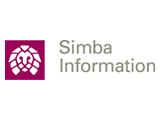
Playing second fiddle to scientific, technical and medical (STM) research is hurting social science and humanities (SSH) fields and, by extension, the market for publishing its findings–this according to Global Social Science and Humanities Publishing 2013-2014, the latest report from Simba Information, a leading media industry forecast and analysis firm.
The disparity plays out in three main areas: research funding, library purchase decisions and public policy decision affecting academia. Simba estimates research spending in SSH subjects is one-tenth of what governments and private foundations dedicate to STM discovery.
Academic libraries–a primary customer and bridge to the end user–have had difficulty keeping up with the rising cost of scientific and technical content. As a result, SSH materials often come out on the short end of budget allocation decisions. Books play a more important role in SSH than in STM publishing. While the typical academic library spends less than 10% of its STM collection development budget on books, more than 50% of social science and humanities publishing goes toward books.
On the policy front, debate over open access to research papers is viewed through the prism of STM and social scientists worry about collateral damage to their disciplines. SSH publications have different price points, a different funding environment and different patterns of usage, but STM is driving the debate.
Simba estimates the global SSH publishing market shrank in 2012. A weak euro, declining print books and precipitous declines in public library database sales offset continued growth in online delivery of book collections and journal site licenses. Global sales were down an average compound rate of 2.5% since 2010.
E-books, books sold as apps on smart phones, for e-readers and digital collections are all growing, but print book sales are in terminal decline. Journals are the only growing publishing activity in SSH. Journals benefit from the emergence of new disciplines and are being carried along in big deals by large STM publishers who also publish SSH titles. Online sales have been falling and, in contrast to the situation in STM, are forecast to be essentially flat. While innovative new multimedia services are taking advantage of technology to deliver video, sound and text in exciting interactive ways, aggregations of magazine and newspaper articles that made up the bulk of public library sales are eroding badly.
Still many small commercial publishers specializing in SSH sustain levels of profit sufficient to satisfy their investors. Unlike STM or law, social science and humanities publishing is highly fragmented. In 2012, no publisher had more than about 5.1% share of the world market.
These presses confront the industry’s challenges through the use of advanced software and techniques for composition, cheaper digitization and file storage mechanisms, sophisticated online content management systems, and short-run and print-on-demand services–all of which lower costs for new publications and give renewed life to their backlist titles. Similarly, Web discovery tools and distribution channels such as Amazon.com have made it possible to reach new markets beyond university libraries.
Global Social Science and Humanities Publishing 2013-2014 provides an overview and financial outlook for the global SSH publishing market based on specific research and analysis of the leading competitors’ performance. This research was conducted in conjunction with a larger study of the overall market for professional publishing.
The market is divided into four content delivery channels: books, journals, online services (including abstracting and indexing) and other, a category that includes audio, video and CD-ROM information.


























